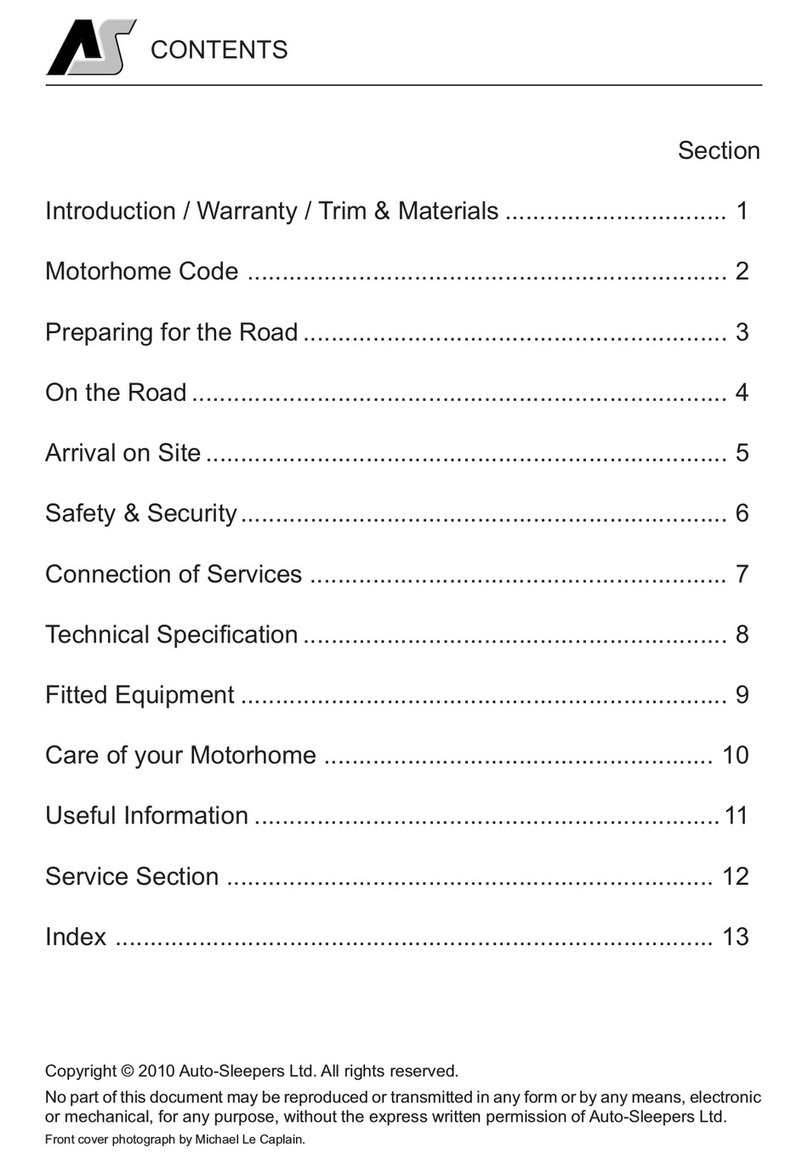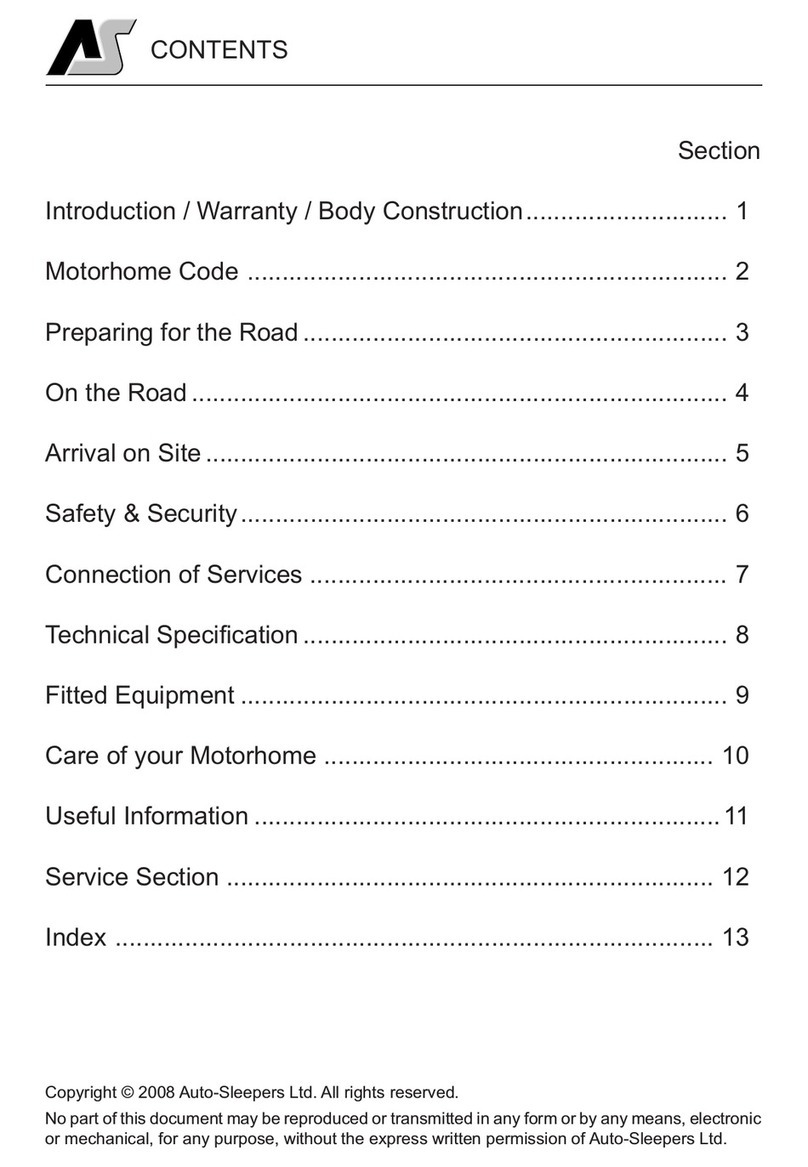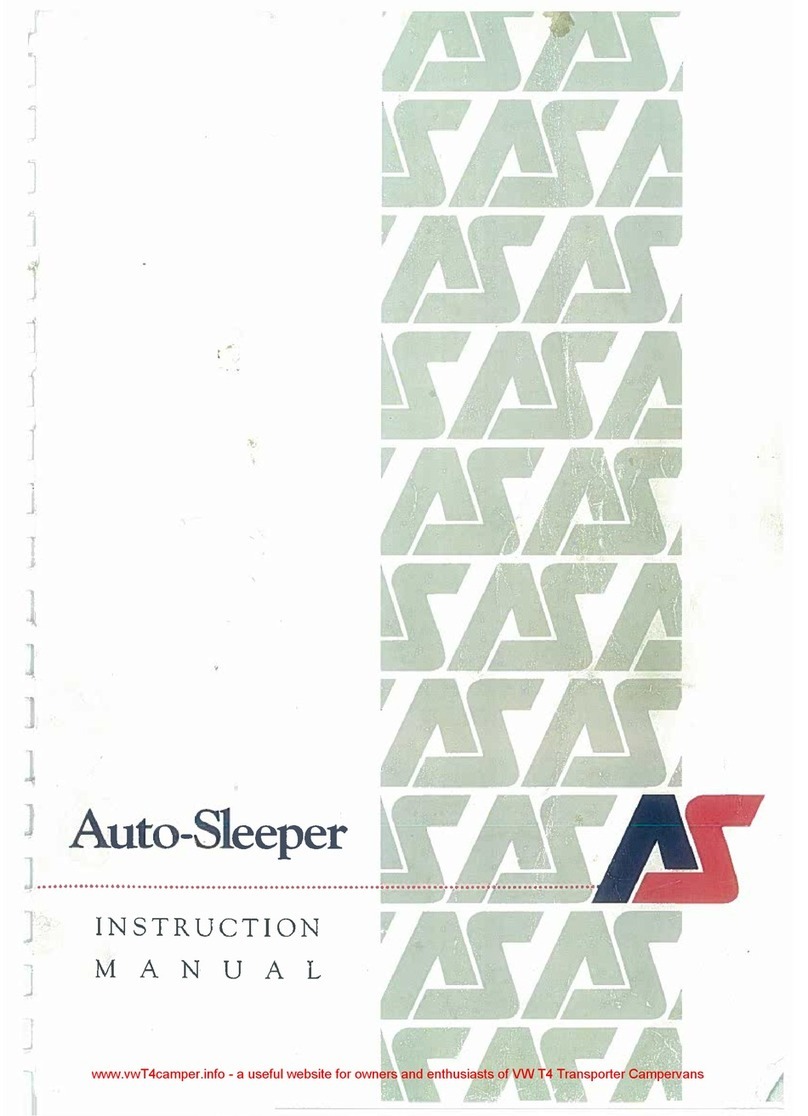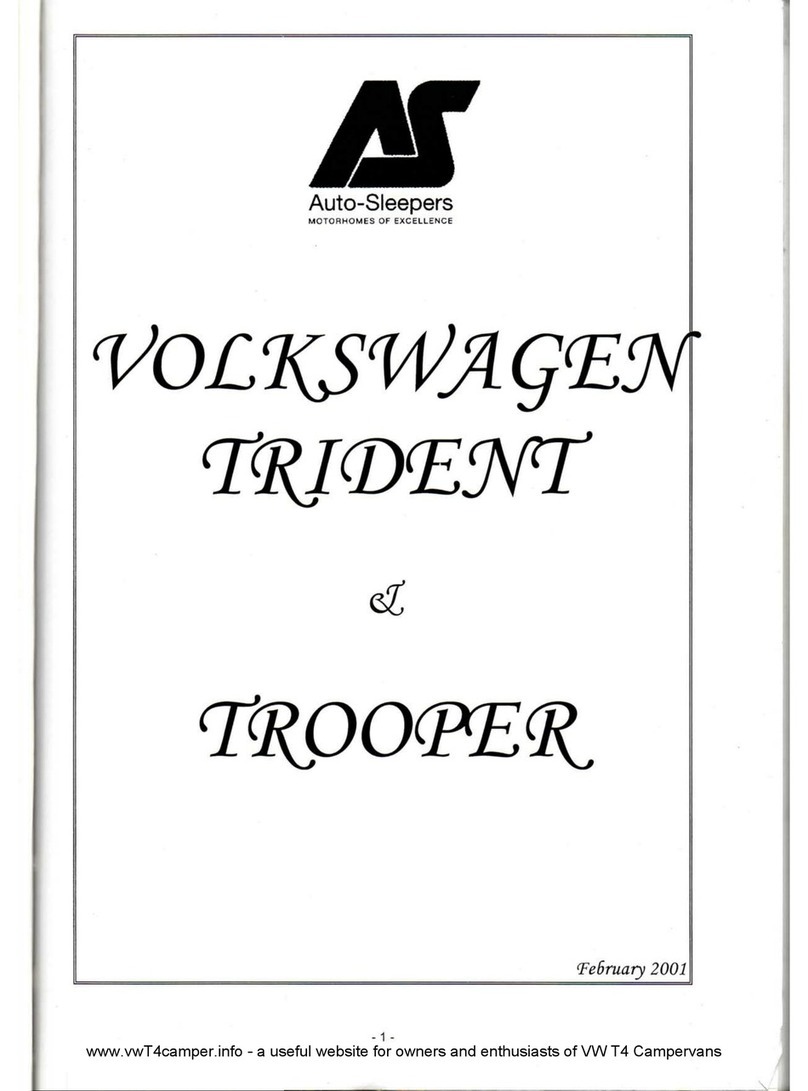
1-1
Welcome.
Congratulations on your purchase of an Auto-
Sleeper motorhome. We are confident it will
give you many years of pleasure.
This handbook has been compiled to enable
you to obtain the maximum pleasure from
your vehicle. It contains the appliance
instructions along with advice on safety
matters.
Please read this Handbook thoroughly so that
you are conversant with all the motorhome
systems, operating instructions and
precautions.
Failure to observe these recommendations or
precautions may result in incorrect operation
of equipment and subsequent risk to
occupants.
Information leaflets and literature on safe
operation of appliances and equipment fitted
to your motorhome are included in the Auto-
Sleeper Customer Pack. Please read these
carefully prior to use.
Should you experience any difficulties contact
your dealer who will be pleased to offer
advise.
It is the policy of Peugeot and Auto-Sleeper to
continually improve their vehicles, so whilst
the details contained in this Handbook are
correct at the time of going to press, they
reserve the right to alter the specifications at
any time without notice.
Auto-Sleeper motorhomes offer a variety of
customer uses and whilst each vehicle
features the optimum storage, fluid, seating
and sleeping capabilities, it is the customer’s
responsibility to select the proper
combinations of loads without exceeding
weight capacities.
Your Auto-Sleeper motorhome conforms to
the European standard EN 1646-1 for
habitation requirements relating to Health and
Safety..
Model
This Handbook covers the Broadway FB and
EL Duo models, based on the Peugeot Boxer
L3 long wheelbase chassis cab.
Gas System
The gas system is designed to operate on
LPG stored in a re-fillable tank fitted
underneath the vehicle. The regulator has a
working pressure of 30mbar.
Conversion Type
Coach-built conversion, two or four berth.
Laminated panel and glass-fibre combination.
Insulated panels have GRP outer skin.
Climatic Conditions
Your motorhome is designed for use in
temperate climates, and has insulation levels
to Grade 3 in accordance with
EN 1646-1:2004.
Handbook
Any queries should be addressed to your
Auto-Sleeper dealer.
Appliance Instructions
The appliance instructions included have
been extracted from those supplied from the
appliance manufacturers.
Automotive - Peugeot
For all automotive matters you should refer to
the Peugeot vehicle instructions manual. This
includes tyre pressures, referring to the type
of tyres fitted.
The Auto-Sleeper conversion does not affect
the tyre pressures in any way as it is built
within the design envelope of the base
vehicle.
IMPORTANT:
In the interests of safety, replacements parts
for appliances must conform to the
manufacturer’s specification and should be
fitted by them or an authorised agent.
To deal with your queries efficiently, always
quote your vehicle’s production number
which can be found in the glove
compartment.
INTRODUCTION
































